Premium Only Content
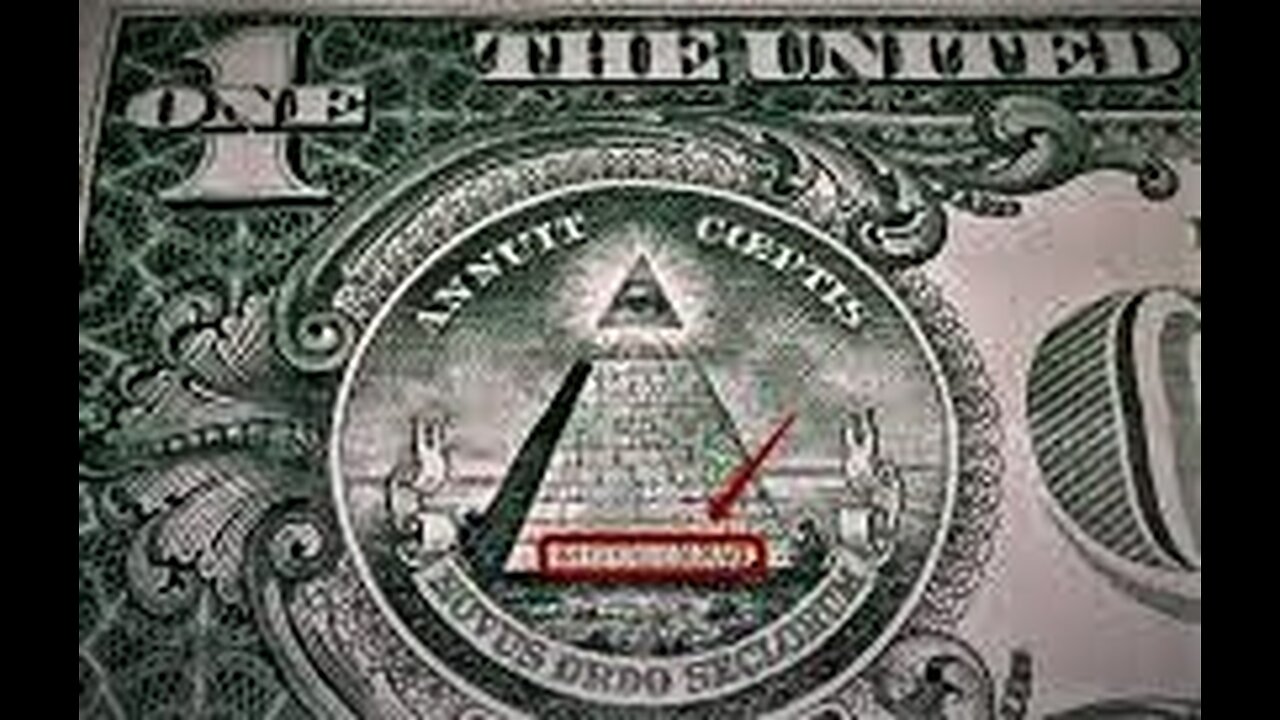
MDCCLXXVI on The $1.00 bill - why 1776
What Do the Symbols on the U.S. $1 Bill Mean?
that portrait of George Washington hasn't always been on the dollar
The very first legal $1 tender was issued by the United States during the Civil War, and it featured a portrait of then-secretary of the treasury, Salmon P. Chase. Washington didn't get that honor until 1869
The Front of the Dollar
Let's start with the front of the dollar bill. It's the side that includes Washington's portrait. It features the Federal Reserve District Seal, the note position letter and number, the serial number, the U.S. Treasury Seal, the note position and plate serial number, and bill series. That's a lot of stuff! Let's break them down.
Today, every $1 bill has a Federal Reserve District Seal. It's a one- or two-digit number that appears in the corner of the bill four different times (this dollar shows a No. 2). The numbers indicate which Federal Reserve Bank actually printed the bill. A No. 2, for example, means it was printed in New York. The District Seal also includes the letters (in this case B) that specify the dollar's issuing Reserve Bank. New York is the Second Federal Reserve District and is designated by the letter B.
The note position letter and number is a combination of one letter and one number (on this bill it's B3) and simply denotes what position on the plate the bill was printed. The front of the $1 bill also includes its note position and plate serial number (B95). It identifies the actual engraving plate and its position on that plate. They appear on both the front and back of the dollar because different plates are used to print each side.
The front of the $1 bill also includes its serial number. This combination of 11 numbers and letters appears twice on the front of the note, and every dollar has a different serial number. The first letter of the serial number must match the letter in the Federal Reserve District Seal. If it doesn't, it's most likely counterfeit. This bill's serial number begins with B.
That last number you see on the front of the $1 bill is the bill series. It's between the portrait of Washington and the signature of the current treasury secretary. It's a year (on this bill it's 2009) but it doesn't actually indicate when the bill was printed. Instead it identifies the year when the design of this particular bill was implemented. New designs are issued when things change, like when a new secretary of the treasury takes office.
Finally, the U.S. Treasury Seal is depicted on the front of the $1 bill. The seal has remained relatively unchanged since 1789, and has arms depicting balance scales, a key and a chevron with 13 stars. The original seal, which was similar to the current design approved in 1968, was designed by Francis Hopkinson, a delegate to the Continental Congress.
The Reverse of the Dollar
The symbols on the flip side of the dollar hold a lot of meaning. They include both sides of The Great Seal of the U.S., as well as the bill's plate serial number.
Let's start there: The plate serial number (56) again simply identifies the actual engraving plate this side of the note was printed on. Remember, the front and back of the bill are printed using different plates, hence they have different plate serial numbers.
Great Seal
This extreme closeup shows the obverse of the Great Seal of the United States of America as featured on the $1 bill. The Founding Fathers took extreme care in choosing its symbolism.
zlisjak/Getty Images
Now onto the Great Seal. The seal dates back to the country's Founding Fathers. Before they adjourned the Continental Congress on July 4, 1776, they formed a committee — it included John Adams, Thomas Jefferson and Benjamin Franklin — to design a seal that would be symbolic of the new country's ideals. It wasn't until five years later, though, that the final design was approved by Congress. The seal's design is credited to Charles Thomson, who was a leading merchant in Philadelphia and secretary of the Continental Congress at the time.
Thomson's design includes lots of symbolism he and the Founding Fathers intended. The obverse, for instance, features an American eagle with a shield on its breast as the central figure. In the eagle's right talon is an olive branch, and in the left talon are bundles of arrows. In its beak the eagle is clutching a white scroll inscribed "E Pluribus Unum" (Latin for "Out of many, one"). Above the eagle is a crest that includes a constellation of 13 stars.
Thomson explained to Congress that the shield's blue horizontal band represents Congress, and its 13 red and white vertical stripes signify the 13 original colonies. The 13 stars above the eagle "denote a new state taking its place and rank among other sovereign powers." The olive branches and arrows, he said, "denote the power of peace and war, which is exclusively vested in Congress." Finally, he said, the motto, "E Pluribus Unum" alludes to the entire union as a whole.
Great Seal
This extreme closeup shows the reverse of the Great Seal as featured on the $1 bill.
Rouzes/Getty Images
The reverse of the seal features an unfinished pyramid, which is made of 13 rows of building blocks; on the first row are the Roman numerals representing 1776. At the top of the pyramid is an eye and rays that radiate outward. Above the pyramid is the inscription "Annuit Coeptis" (Latin for "Providence Has Favored Our Undertakings"); below the pyramid it says "Novus Ordo Seclorum" (Latin for "A New Order of the Ages").
Thomson told Congress he chose a pyramid to symbolize strength and longevity, and the the eye and motto above to "allude to the many signal interpositions of providence in favour [sic] of the American cause." Thomson wrote the motto beneath the pyramid — "Novus Ordo Seclorum" — and the Roman numerals for 1776 as a way to honor the country's beginnings from that date.
Got all that? Good thing because the U.S. government has no plans of ever changing it. In fact, there's a law in place that prohibits the redesign of $1 bill. And we're glad because we have no intention of ever writing this article again.
Now That's Interesting
The largest denomination of U.S. currency is the $100 bill. The U.S. Federal Reserve did, however, once print a $100,000 Gold Certificate from Dec. 18, 1934, to Jan. 9, 1935, for transactions between Federal Reserve Banks.
Symbols on Dollar Bills FAQ
What is the worth of a one dollar star note?
How much you’ll get for it varies depending on where you sell it, but on eBay, a one dollar star note tends to go for upwards of five dollars.
How do I know if my star note is worth money?
To determine its value, you must factor in the age, condition, size of the print run, how many other star notes were printed in the run and how many other star notes exist in the same denomination.
Where do I locate the star on a dollar bill?
If a dollar bill has a star or asterisk, it will be at the end of the serial number printed on the bill.
What are star notes?
Star notes are replacements for originals that were either misprinted or unable to be used for another reason.
What is the rarest star note?
The two most rare star notes arethe series 1928B two dollar legal tender and the 1928 one dollar legal tender
Share:
Citation
Related Links
Up Next
How Money Laundering Works
Explore More
Why Do Some U.S. Bills Have a Star at the End of the Serial Number?
Economics
Why Do Some U.S. Bills Have a Star at the End of the Serial Number?
The History and Symbolism of the U.S. Presidential Seal
People
The History and Symbolism of the U.S. Presidential Seal
How Counterfeiting Works
Economics
How Counterfeiting Works
Why would the U.S. mint a trillion-dollar coin?
Economics
Why would the U.S. mint a trillion-dollar coin?
U.S. Coins Display No Numerical Values — Not Even the Government Knows Why
Economics
U.S. Coins Display No Numerical Values — Not Even the Government Knows Why
Can You Guess the Measurements of These Common Items?
The World
Can You Guess the Measurements of These Common Items?
You May Like
Can I really trade my dollars in for gold bullion?
Explore More
How the Fed Works
Economics
How the Fed Works
How Does a Counterfeit Detector Pen Work?
Economics
How Does a Counterfeit Detector Pen Work?
No, Not Only U.S. Presidents Are on American Money
History
No, Not Only U.S. Presidents Are on American Money
Why Did the U.S. Experience a Coin Shortage?
Economics
Why Did the U.S. Experience a Coin Shortage?
How Much Actual Money Is There in the World?
Economics
How Much Actual Money Is There in the World?
What's the difference between the U.S. deficit and the national debt?
Economics
What's the difference between the U.S. deficit and the national debt?
Keep Reading
The Two Basic Steps to Put Your Own Face on U.S. Money
Explore More
How Money Laundering Works
By: Julia Layton & Oisin Curran | Updated: Apr 19, 2021
money, laundering
The United Nations Office on Drugs and Crime reckons that somewhere between $800 billion and $2 trillion goes through the money laundering rinse cycle every year. AlexSava/Getty Images
As of September 2018, Paul Manafort, who served at one time as President Trump's campaign chairman, has been found guilty on eight counts of tax and bank fraud. In a separate trial, he will be prosecuted for money laundering. The money laundering charges have to do with a scheme that follows a tried and true method for rinsing the dirt off your treasure. Manafort is alleged to have garnered millions from the former Ukrainian President Viktor Yanukovych. Rather than declare these earnings to the IRS and turn over the taxes due, Manafort is said to have placed them in offshore accounts and then used them to buy expensive real estate in the U.S.
Once he owned the properties, prosecutors say he then used them as collateral to take out millions of dollars in loans from U.S. banks. Since the money was in the form of loans rather than income, he wasn't obliged to pay taxes on it. The old real estate bait-and-switch is a classic mode of cleaning up cash. Money laundering is an ancient felonious practice and Manafort is hardly the first political figure to get himself mixed up in it.
In October 2005, for instance, U.S. congressman Tom DeLay was indicted on money laundering charges, forcing him to step down as House Majority Leader.
Money laundering is a ubiquitous practice. The United Nations Office on Drugs and Crime reckons that somewhere between $800 billion and $2 trillion goes through the rinse cycle every year [source: The Economist]. That's in the neighborhood of 2 to 5 percent of the entire planet's GDP! The rise of global financial markets makes money laundering easier than ever— countries with bank-secrecy laws are directly connected to countries with bank-reporting laws, making it possible to anonymously deposit "dirty" money in one country and then have it transferred to any other country for use.
Money laundering, at its simplest, is the act of making money that comes from Source A look like it comes from Source B. In practice, criminals are trying to disguise the origins of money obtained through illegal activities so it looks like it was obtained from legal sources. Otherwise, they can't use the money because it would connect them to the criminal activity, and law-enforcement officials would seize it.
Money laundering happens in almost every country in the world, and a single scheme typically involves transferring money through several countries in order to obscure its origins. In this article, we'll learn exactly what money laundering is and why it's necessary, who launders money and how they do it and what steps the authorities are taking to try to foil money-laundering operations.
Contents
Money Laundering Basics
Money-laundering Methods
White-collar Laundering: Eddie Antar
Drug-money Laundering: Franklin Jurado
The Effects of Money Laundering
Fighting Money Laundering
Art, Terror and Clean Cash
Crypto-Mania
Money Laundering Basics
HowStuffWorks
The most common types of criminals who need to launder money are drug traffickers, embezzlers, corrupt politicians and public officials, mobsters, terrorists and con artists. Drug traffickers are in serious need of good laundering systems because they deal almost exclusively in cash, which causes all sorts of logistics problems. Not only does cash draw the attention of law-enforcement officials, but it's also really heavy. Cocaine that's worth $1 million on a New York street weighs about 70 pounds (30 kilograms), while a stash of U.S. dollars worth $1 million weighs about 256 pounds (116 kilograms).
The basic money laundering process has three steps:
Placement: At this stage, the launderer inserts the dirty money into a legitimate financial institution. This is often in the form of cash bank deposits. This is the riskiest stage of the laundering process because large amounts of cash are pretty conspicuous, and banks are required to report high-value transactions.
Layering: This involves sending money through various financial transactions to change its form and make it difficult to follow. Layering may consist of several bank-to-bank transfers; wire transfers between different accounts in different names in different countries; making deposits and withdrawals to continually vary the amount of money in the accounts; changing the money's currency; and purchasing high-value items (boats, houses, cars, diamonds) to change the form of the money. This is the most complex step in any laundering scheme, and it's all about making the original dirty money as hard to trace as possible.
Integration: At the integration stage, the money re-enters the mainstream economy in legitimate-looking form — it appears to come from a legal transaction. This may involve a final bank transfer into the account of a local business in which the launderer is "investing" in exchange for a cut of the profits, the sale of a yacht bought during the layering stage or the purchase of a $10 million screwdriver from a company owned by the launderer. At this point, the criminal can use the money without getting caught. It's very difficult to catch a launderer during the integration stage if there is no documentation during the previous stages.
Money laundering is a crucial step in the success of drug trafficking and terrorist activities, not to mention white collar crime, and there are countless organizations trying to get a handle on the problem. In the United States, the Department of Justice, the State Department, the Federal Bureau of Investigation, the Internal Revenue Service and the Drug Enforcement Agency all have divisions investigating money laundering and the underlying financial structures that make it work. State and local police also investigate cases that fall under their jurisdiction. Because global financial systems play a major role in most high-level laundering schemes, the international community is fighting money laundering through various means, including the Financial Action Task Force on Money Laundering (FATF), which as of 2018 has 37 member states and organizations. The United Nations, the World Bank and the International Monetary Fund also have anti-money-laundering divisions.
Money-laundering Methods
HowStuffWorks
In 1996, Harvard-educated economist Franklin Jurado went to prison for cleaning $36 million for Colombian drug lord Jose Santacruz-Londono. People with a whole lot of dirty money typically hire financial experts to handle the laundering process. It's complex by necessity: The entire idea is to make it impossible for authorities to trace the dirty money while it's cleaned.
There are lots of money-laundering techniques that authorities know about and probably countless others that have yet to be uncovered. Here are some of the more popular ones:
Black Market Colombian Peso Exchange: This system, which has been called, "perhaps the largest, most insidious money laundering system in the Western Hemisphere," came to light in the 1990s [source: Zill and Bergman]. A Colombian official sat down with people in the U.S. Treasury Department to discuss the problem of U.S. goods being illegally imported into Colombia using the black market. When they considered the issue alongside the drug-money-laundering problem, U.S. and Columbian officials put two and two together and discovered that the same mechanism was achieving both ends. This complex setup relies on the fact that there are businesspeople in Colombia — typically importers of international goods — who need U.S. dollars in order to conduct business. To avoid the Colombian government's taxes on the money exchange from pesos to dollars and the tariffs on imported goods, these businessmen can go to black market "peso brokers" who charge a lower fee to conduct the transaction outside of government intervention. That's the illegal importing side of the scheme. The money-laundering side goes like this: A drug trafficker turns over dirty U.S. dollars to a peso broker in Colombia. The peso broker then uses those drug dollars to purchase goods in the United States for Colombian importers. When the importers receive those goods (below government radar) and sell them for pesos in Colombia, they pay back the peso broker from the proceeds. The peso broker then gives the drug trafficker the equivalent in pesos (minus a commission) of the original, dirty U.S. dollars that began the process.
Structuring deposits: Also known as smurfing, this method entails breaking up large amounts of money into smaller, less-suspicious amounts. In the United States, this smaller amount has to be below $10,000 — the dollar amount at which U.S. banks have to report the transaction to the government. The money is then deposited into one or more bank accounts either by multiple people (smurfs) or by a single person over an extended period of time.
Overseas banks: Money launderers often send money through various "offshore accounts" in countries that have bank secrecy laws, meaning that for all intents and purposes, these countries allow anonymous banking. A complex scheme can involve hundreds of bank transfers to and from offshore banks. According to the International Monetary Fund, "major offshore centers" include the Bahamas, Bahrain, the Cayman Islands, Hong Kong, Panama and Singapore.
Underground/alternative banking: Some countries in Asia have well-established, legal alternative banking systems that allow for undocumented deposits, withdrawals and transfers. These are trust-based systems, often with ancient roots, that leave no paper trail and operate outside of government control. This includes the hawala system in Pakistan and India and the fie chen system in China.
Shell companies: These are fake companies that exist for no other reason than to launder money. They take in dirty money as "payment" for supposed goods or services but actually provide no goods or services; they simply create the appearance of legitimate transactions through fake invoices and balance sheets.
Investing in legitimate businesses: Launderers sometimes place dirty money in otherwise legitimate businesses to clean it. They may use large businesses like brokerage firms or casinos that deal in so much money it's easy for the dirty stuff to blend in, or they may use small, cash-intensive businesses like bars, car washes, strip clubs or check-cashing stores. These businesses may be "front companies" that actually do provide a good or service but whose real purpose is to clean the launderer's money. This method typically works in one of two ways: The launderer can combine his dirty money with the company's clean revenues — in this case, the company reports higher revenues from its legitimate business than it's really earning; or the launderer can simply hide his dirty money in the company's legitimate bank accounts in the hopes that authorities won't compare the bank balance to the company's financial statements.
Most money-laundering schemes involve some combination of these methods, although the Black Market Peso Exchange is pretty much a one-stop-shopping system once someone smuggles the cash to the peso broker. The variety of tools available to launderers makes this a difficult crime to stop, but authorities do catch the bad guys every now and then. In the next section, we'll take a look at two busted money-laundering operations.
Tom DeLay
In October 2005, a Texas county indicted U.S. congressman Tom DeLay on charges that included money laundering and conspiracy to violate election codes. (The conspiracy charge was later thrown out.)
In Texas, candidates for legislature are not allowed to receive corporate campaign donations. The prosecution held that DeLay took part in an alleged scheme to bypass that rule and hide the corporate origins of money that ended up in the hands of Republican candidates in Texas. The alleged laundering scheme involved sending corporate donations from Texas to the Republican National Committee (RNC) headquarters in Washington D.C., and the RNC then sending an equal amount of money back to Texas for use in campaigning.
DeLay was convicted in 2010 and sentenced to three years in prison but remained free on bond as he appealed. In 2013 the Texas Third Court of Appeals overturned the conviction on grounds of legally insufficient evidence.
White-collar Laundering: Eddie Antar
HowStuffWorks
In the 1980s, Eddie Antar, the owner of Crazy Eddie's Electronics, skimmed millions of dollars from the company to hide it from the IRS. That was the original plan, anyway, but he and his co-conspirators eventually decided they could make better use of the money if they sent it back to the company disguised as revenue. This would inflate the company's reported assets in preparation for its IPO. In a series of trips to Israel, Antar carried millions of dollars strapped to his body and in his suitcase. Here's a basic recounting of how the scheme worked:
Placement: Antar made a series of separate deposits to a bank in Israel. On one trip, he made 12 deposits in a single day.
Layering: Before U.S. or Israeli authorities had a chance to notice the suddenly huge balance in the account, Antar had the Israeli bank wire transfer everything to Panama, where bank secrecy laws are in effect. From that account, Antar could make anonymous transfers to various offshore accounts.
Integration: Antar then slowly wired the money from those accounts to the legitimate Crazy Eddie's Electronics bank account, where the money got mixed in with legitimate dollars and documented as revenue.
Overall, Crazy Eddie laundered more than $8 million. His scheme boosted the initial offering stock price so that the company ended up worth $40 million more than it would have been without the added revenue. Antar sold his stock and left with $30 million in profit. Authorities found him in Israel in 1992, and Israel extradited him to the United States to stand trial. He received an eight-year prison sentence.
Drug-money Laundering: Franklin Jurado
HowStuffWorks
In the late 1980s and early '90s, Harvard-educated economist Franklin Jurado ran an operation to launder money for Colombian drug lord Jose Santacruz-Londono. His was a very complex scheme. In its simplest form, the operation went something like this:
Placement: Jurado deposited cash from U.S. drug sales in Panama bank accounts.
Layering: He then transferred the money from Panama to more than 100 bank accounts in 68 banks in nine countries in Europe, always in transactions under $10,000 to avoid suspicion. The bank accounts were in made-up names and names of Santacruz-Londono's mistresses and family members. Jurado then set up shell companies in Europe in order to document the money as legitimate income.
Integration: The plan was to send the money to Colombia, where Santacruz-Londono would use it to fund his numerous legitimate business there. But Jurado got caught.
In total, Jurado funneled $36 million in drug money through legitimate financial institutions. Jurado's scheme came to light when a Monaco bank collapsed, and a subsequent audit revealed numerous accounts that could be traced back to Jurado. At the same time, Jurado's neighbor in Luxembourg filed a noise complaint because Jurado had a money-counting machine running all night. Local authorities investigated, and a Luxembourg court ultimately found him guilty of money laundering. When he'd finished serving his time in Luxembourg, a U.S. court found him guilty, too, and sentenced him to seven-and-a-half years in prison [source: UN General Assembly].
When authorities are able to interrupt a laundering scheme, it can pay off tremendously, leading to arrests, dirty money and property seizures and sometimes the dismantling of a criminal operation. However, most money-laundering schemes go unnoticed, and large operations have serious effects on social and economic health.
The Effects of Money Laundering
As noted in the introduction, it's estimated that money launderers scrub as much as $2 trillion (or 5 percent of the world's GDP) every year. The global effect is staggering in social, economic and security terms.
On the socio-cultural end of the spectrum, successfully laundering money means that criminal activity actually does pay off. This success encourages criminals to continue their illicit schemes because they get to spend the profit with no repercussions. This means more fraud, more corporate embezzling (which means more workers losing their pensions when the corporation collapses), more drugs on the streets, more drug-related crime, law-enforcement resources stretched beyond their means and a general loss of morale on the part of legitimate business people who don't break the law and don't make nearly the profits that the criminals do.
The economic effects are on a broader scale. Developing countries often bear the brunt of modern money laundering because the governments are still in the process of establishing regulations for their newly privatized financial sectors. This makes them a prime target. In the 1990s, numerous banks in the developing Baltic states ended up with huge, widely rumored deposits of dirty money. Bank patrons proceeded to withdraw their own clean money for fear of losing it if the banks came under investigation and lost their insurance. The banks collapsed as a result. Other major issues facing the world's economies include errors in economic policy resulting from artificially inflated financial sectors. Massive influxes of dirty cash into particular areas of the economy that are desirable to money launderers create false demand, and officials act on this new demand by adjusting economic policy. When the laundering process reaches a certain point or if law-enforcement officials start to show interest, all of that money that will suddenly disappear without any predictable economic cause, and that financial sector falls apart.
Some problems on a more local scale relate to taxation and small-business competition. Laundered money is usually untaxed, meaning the rest of us ultimately have to make up the loss in tax revenue. Also, legitimate small businesses can't compete with money-laundering front businesses that can afford to sell a product for cheaper because their primary purpose is to clean money, not turn a profit. They have so much cash coming in that they might even sell a product or service below cost.
The majority of global investigations focus on two prime money-laundering industries: Drug trafficking and terrorist organizations. The effect of successfully cleaning drug money is clear: More drugs, more crime, more violence. The connection between money laundering and terrorism may be a bit more complex, but it plays a crucial role in the sustainability of terrorist organizations. Most people who financially support terrorist organizations do not simply write a personal check and hand it over to a member of the terrorist group. They send the money in roundabout ways that allow them to fund terrorism while maintaining anonymity. And on the other end, terrorists do not use credit cards and checks to purchase the weapons, plane tickets and civilian assistance they need to carry out a plot. They launder the money so authorities can't trace it back to them and foil their planned attack. Interrupting the laundering process can cut off funding and resources to terrorist groups.
So the next question is: What are authorities doing to prevent money laundering?
Currency of Choice
For decades, the U.S. dollar has been the most popular currency for launders to use. Its popularity is due to its wide acceptance and the volume of worldwide transactions that use the currency — a few million extra dollars changing hands doesn't attract attention. However, the euro has slowly gained a foothold in the laundering industry since its introduction into common use in 2002. As far as money laundering goes, the euro could be the perfect currency: It is the main legal tender of more than a dozen countries, meaning it circulates in tremendous volume and moves regularly across borders without any notice at all. So pervasive is the problem that as of 2018, the EU has five anti-money laundering directives. The fifth, and most recent, expands the powers of regulators to handle virtual currency transactions, a growing phenomenon which we'll come back to on the final page [source: Treanor]
Fighting Money Laundering
Stopping the flowof laundered cash
HowStuffWorks
It's a daunting task to trace the origins of any deposit when there are many hundreds of thousands of global wire transfers equaling trillions of dollars occurring every day [source: U.S. Dept. of Treasury]. Which is the dirty money and which is the clean stuff? Within the United States, there are two primary methods employed by the government to detect and combat money laundering: legislation and law enforcement.
The United States addresses the crime of money laundering in countless legislative acts. Here are just a few of them:
The Bank Secrecy Act (1970) basically eliminates all anonymous banking in the United States. It gives the Treasury Department the ability to force banks to keep records that make it easier to spot a laundering operation. This includes reporting all single transactions above $10,000 and multiple transactions totaling more than $10,000 to or from a single account in one day. A banker who consistently violates this rule can serve up to 10 years in prison.
The 1986 Money Laundering Control Act makes money laundering a crime in itself instead of just an element of another crime, and the 1994 Money Laundering Suppression Act orders banks to establish their own money-laundering task forces to weed out suspicious activity in their institutions. The 2001 U.S. Patriot Act sets up mandatory identity checks for U.S. bank patrons and provides resources toward tracking transactions in the underground/alternative banking systems frequented by terrorist money handlers. In 2004, the government extended the reach of the Bank Secrecy Act to include cross-border electronic transactions [source: FCEN].
In addition to legislation intended to detect a money-laundering operation, undercover stings are also a component of the fight. The DEA's Operation Juno, which ended in 1999, is a prime example. The DEA out of Atlanta conducted a sting operation that involved providing resources to drug traffickers to launder money. The undercover DEA agents made deals with the traffickers to turn drug money from dollars to pesos using the Colombian Black Market Peso Exchange. The operation ended with 40 arrests and the seizure of $10 million in drug proceeds and 3,600 kilograms of cocaine.
Despite these victories, the truth is that no individual nation has the power to stop money laundering — if one country is hostile to laundering, criminals simply look elsewhere for a place to clean their money. Global cooperation is essential. The most prominent international organization in this respect is probably the Financial Action Task Force (FATF). The FATF issued the "40 Recommendations" for banks (there are actually 49 now, but the moniker hasn't changed) that have become the anti-money-laundering standard. These recommendations include:
Identify and do background checks on depositors.
Report all suspicious activity. (For example, if a background check revealed that depositor A works in a steel factory, and he typically deposits $2,000 every two weeks, a series of 10 $9,000 deposits over the course of two weeks should raise a red flag.)
Build an internal taskforce to identify laundering clues.
The "recommendations" are really more like rules than friendly tips. The FATF keeps a list of "uncooperative countries" — those who have not enacted the recommendations. The FATF encourages its member states not to deal with those countries in financial matters.
Other global organizations fighting money laundering include the United Nations, the International Monetary Fund, the World Bank, and smaller groups like the Caribbean FATF and the Asia/Pacific Group on Money Laundering.
While increased worldwide efforts are making a small dent in the money-laundering industry, the problem is huge, and the money launderers are winning overall. Countries with bank-secrecy rules, which arguably have legitimate benefits to the honest depositor, make it extremely hard to track money once it's transferred overseas. Still, more than 190 jurisdictions worldwide have signed up to follow the FATF's Recommendations. The organization's list of "High-risk and other monitored jurisdictions" counts just 10 countries (Serbia, Tunisia, Ethiopia, Syria, Yemen, Iran, Pakistan, Sri Lanka and North Korea) [source: FATF].
Art, Terror and Clean Cash
They say politics makes strange bedfellows — apparently so does crime. In recent years, the international organizations devoted to curbing money laundering have been focusing their attention on the strange confluence of terrorism and the art market. On closer inspection, this unexpected pairing begins to make sense. In two important respects, the art market is tailor-made for money laundering — it has long cultivated a tradition of secrecy and it often involves the transfer of large sums of money. By contrast, in the world of real estate, the buyer, the seller and the broker are all subject to strictly enforced legal obligations to disclose who they are, what's being bought and for how much. But in the art world, few such rules apply. Sometimes auction houses don't know who owns the article they're selling or even who they're selling it too.
Now factor in the operational costs of terrorist groups like ISIS, who have seized control of some of the richest archaeological territory in the world. ISIS is known to be directly self-financing through the sale of looted items known as "blood antiques," from which they've raised tens, if not hundreds, of millions of dollars [source: Watson]. But they also receive funding from wealthy supporters who use the art market to launder funds. These supporters employ various techniques, including sometimes giving an accomplice the funds to buy a work of art, or securing a bid by depositing a sum of money in a well-established bank. When the buyer (money launderer) later backs out of the deal, the bank issues a check for the security, effectively sending back clean money. This can then be used to finance terrorist operations without fear of being traced [source: Giroud and Lechtman].
Recognizing the scope of the problem, various international organizations have been trying to crack down on use of the art market to fund terrorism. In Switzerland, for instance, the country's Anti-Money Laundering Act has been revised to oblige art dealers to comply with new regulations. Those brokering deals that exceed a cap of 100,000 Swiss francs, for instance, are now required to disclose the identities of both the buyer and seller [source: Giroud and Lechtman]. That said, no international standard has yet been agreed upon and due to its long-established culture of discretion, the art market as a whole remains resistant to increased transparency.
Crypto-Mania
Fighting money laundering is like playing a vast game of whack-a-mole. One of the developments that keeps officials up at night is the rise of crypto-currencies. Just think of it: untrackable funds — what could be more perfectly suited to scrubbing your riches shiny clean? When it comes down to it, money laundering is all about disguising the sources of wealth.
cryptocurrency, laundering
Cryptocurrencies are changing the face of money laundering.
sorbetto / Getty Images
Here's an example: Gangs in Europe bought cocaine from Colombian cartels having shifted Euros into crypto-currencies and depositing the funds in a digital account that had a Colombian registration. From that account, the crypto-funds were turned into pesos using an internet exchange and taken out in the form of cash. The cash was distributed to multiple "money mules" who deposited the small sums into local bank accounts. The cartels then collect their squeaky-clean sums via e-transfer or cash withdrawals.
Similarly, the nefarious nerds behind ransomware attacks can brush the mud from their dirty crypto through lightning-fast digital swaps and by "micro-laundering," a practice that involves atomizing the money into quantities so small that by the time its reassembled, the electronic path it took is too dizzyingly complex to follow.
Crypto-cleaning is still in its infancy and is reckoned to account for just a fraction of all money laundering. Still, the authorities are keeping a close eye on developments. It seems like it's just a matter of time before digital-dodging goes mainstream [source: The Economist]. And while digital money is state-of-the-art, that doesn't mean that it can't ultimately be tracked. After all, crypto-currencies, like Bitcoin, are really just forms of data. And if law enforcement officials are diligent and clever enough, they can follow that data back to its source.
Meanwhile, crypto enthusiasts, aware that their digital darling is being linked by association with crime, are demanding that governments get hip to the new tricks and do some legislating. Without effective regulation to deter virtual money laundering, they argue, crypto currencies will languish in the shadows instead of becoming what they could be: the future of money [source: Beer].
For more information on money laundering and related topics, check out the links on the next page.
-
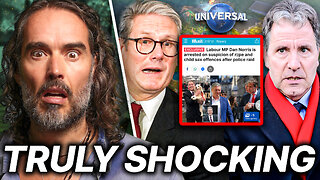 9:55
9:55
Russell Brand
1 day agoThis Is Absolutely Shocking...
55.9K76 -
 26:01
26:01
The Brett Cooper Show
2 days ago $3.02 earnedChappell Roan Says All Parents Are Miserable. Is She Right? | Episode 21
13.2K24 -
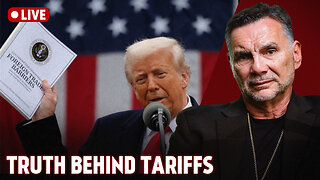 1:34:25
1:34:25
Michael Franzese
18 hours agoThey Blame Trump for Everything - But Who’s Really Wrecking the Economy?
44.9K58 -
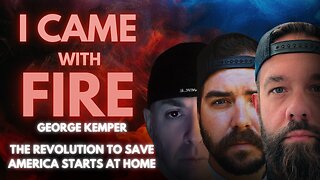 1:43:55
1:43:55
I_Came_With_Fire_Podcast
14 hours agoThe REVOLUTION to SAVE AMERICA Starts At HOME
38.1K9 -
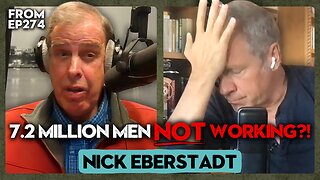 28:33
28:33
Mike Rowe
3 days agoWhy Are Healthy Men Exiting The Workforce? | Nick Eberstadt #274 | The Way I Heard It
38.9K210 -
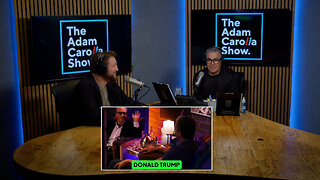 38:40
38:40
Adam Carolla
2 days ago $12.09 earnedBill Maher Calls Trump 'Effective'?! You won't see it coming! | Adam Carolla Show | #news
70.7K31 -
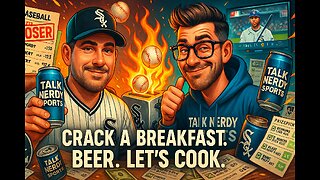 14:40
14:40
Talk Nerdy Sports - The Ultimate Sports Betting Podcast
5 hours ago4/12/25 - Wake the F Up: It’s Saturday! It’s War!
30.5K4 -
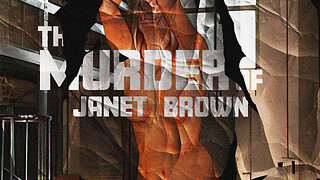 5:07
5:07
DEADBUGsays
1 day agoThe Murder of Janet Brown
30.2K4 -
 13:08
13:08
NinjaGamblers
1 day ago $1.45 earnedHow to Win at Roulette 99.98% of the Time with This Crazy Combo 🤯
27.7K -
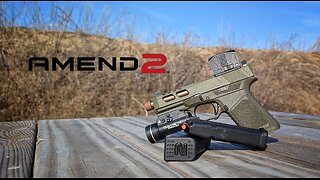 20:54
20:54
Chris From The 740
19 hours ago $1.30 earnedThird Time’s the Charm? Amend2 Mod3 Glock Mag Put to the Test!
27.9K4